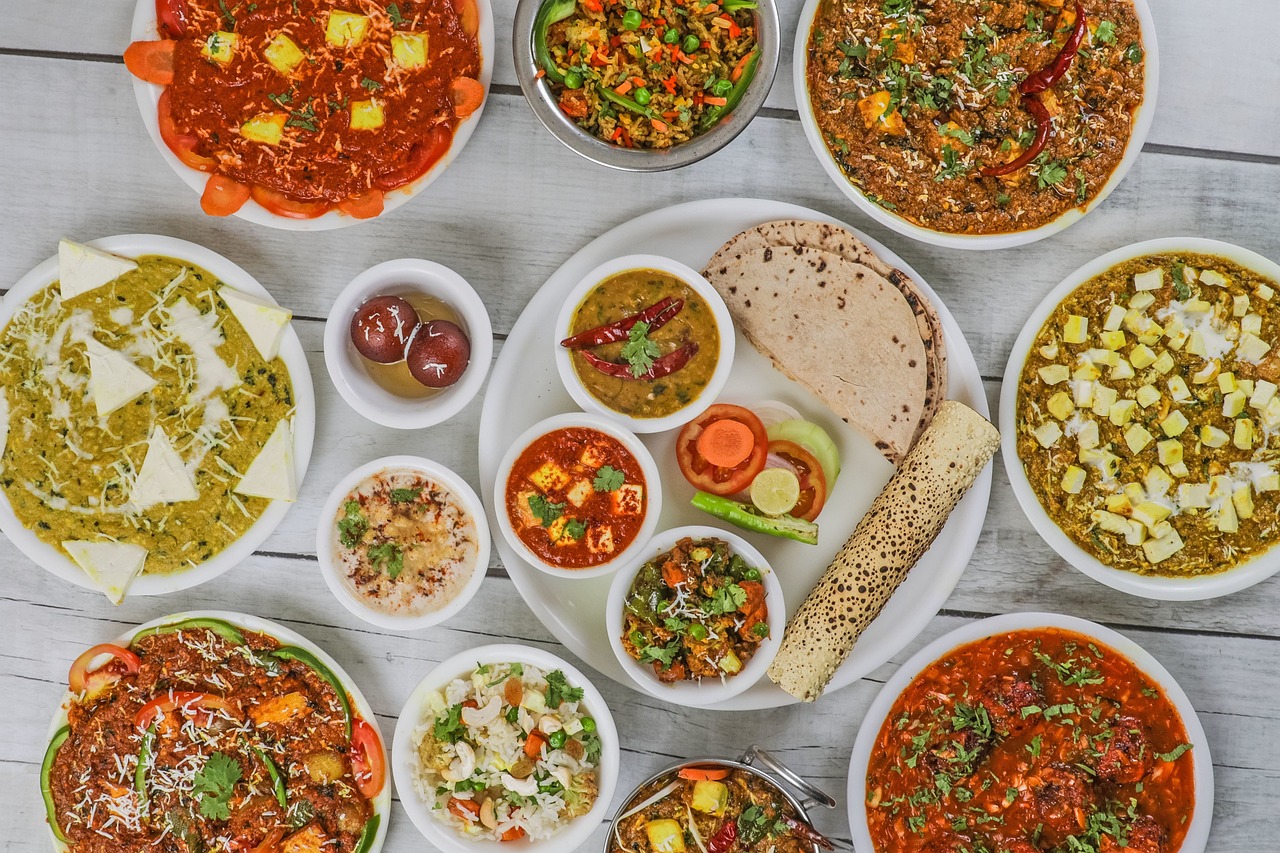आयु:सत्त्वबलारोग्यसुखप्रीतिविवर्धना: |
रस्या: स्निग्धा: स्थिरा हृद्या आहारा: सात्त्विकप्रिया: ||श्रीमद्भगवद्गीता, अध्याय १७, श्लोक ८
Persons in the mode of goodness prefer foods that promote life span, and increase virtue, strength, health, happiness, and satisfaction. Such foods are juicy, succulent, nourishing, and naturally tasteful.
Bhagavad Gita, Chapter 17, Verse 8
At the beginning of last century, many physicists thought that all the difficult problems have been solved and there is not much left to do exciting research on. Starting from the 1900, the next thirty-forty years saw a series of discoveries by Planck, Einstein, Bohr, Bose, Heisenberg, Dirac, Schrödinger, and others on relativity and quantum mechanics – the so-called ‘modern physics’, that turned the world of physics upside down. While considerble progress has been made in the last century, some of the fundamental problems posed by these theories remain untractable even today, like reconciling gravity and quantum mechanics.
A similar revolution is currently underway in the field of health, nutrition, and medicine. Regular readers of the blog will know that I am talking about ‘gut microbiome’ – the trillions of viruses, bacteria, and fungi that reside in our gut. While we have made great strides in the field of health and diseases in the last century, the role of gut microbiome remained largely unexplored. We now know that gut microbiome is imporant in everything ranging from immunity, hormone production to how patients respond to treatments. It plays a vital role in controlling digestion, cholesterol levels, and fat metabolism.
This century will be dominated by personalized nutrition and treatment, depending on what type of gut microbiome you have. Ever wondered why you do not get the same results even after religiously following the diet and exercise plan of your favorite fitness influencer? The answer may lie in the fact that you have a different gut microbiome. Even identical twins show different responses to food when they have different gut microbiome. And if this was not enough, we are also discovering that even oral microbiome and skin microbiome play important roles and we know even less about them.
To paraphrase visionaries in human health from Hippocrates to leaders of the Ayurvedic Movement, ‘If you don’t take food as medicine, you may soon take medicine as food.’ The dietary choices that we make day-to-day have a profound effect on our ability to live a healthy lifestyle.
David Bianchi, NCSA Genomics Research Scientist, University of Illinois, Urbana-Champaign
Until now, one would have been excused to think that bad oral microbiome might give you bad breath and cavities but it can’t be that serious than (possibly painful) visits to the dentist. Latest research shows that the oral microbiome talks with the gut microbiome and they both play a vital role in cardio-metabolic health.
If you want to see how rapidly the field is changing, here’s a little experiment. Set up a Google Alert for the phrase ‘gut microbiome’ so that every morning you will receive the latest news on the topic. You can ignore catchy headlines like ‘this single fruit/vegetable will transform your gut microbiome.’ (Variety is more important than eating any single plant. Instead of eating same veg salad all week, it’s better to mix it with nuts, legumes, and vegetables.) The rest will be hard core science results, published in well known journals using well established scientific methodology.
Here’s an example. Research suggests that a genus of gut bacteria known as the Blautia may help people adapt to high altitudes. They found that this bacteria went from rare to very abundant when the subjects changed their residence from 250 meters above the sea level to about 3700 meters. This study shows that moving from low to high altitudes can change your gut microbiome. In addition, Blautia also plays an important role in protecting against obesity, diabetes and can curb the development of appendicitis.
The reason why I am repeatedly writing on this topic is that I still see health articles promoting ultra processed foods from energy drinks to ‘low-fat’ yogurts. So there are many persons who are still not fully aware of the harmful effects of these foods. That’s why I am shouting from this virtual rooftop – keep your gut microbiome healthy.
Also, the field is changing so fast, if I write this same article few months later, I will have new information to share.

This article is not intended to serve as medical advice. Please consult your physician before making any changes in your diet, excercise etc.
How do you keep your gut microbiome healthy? The trick is to eat 30 different plants a week. This magic number comes from the ZOE podcast (not a paid promotion) and has been obtained through double blind clinical trials. One of the co-founders of ZOE is Prof. Tim Spector, who is a professor of Genetic Epidemiology at King’s College, London and is one of the world’s leading researchers. Definition of plants include green vegetables, lentils, legumes, pulses, herbs, and spices.
It’s a revelation how much things have changed in last two decades. When I was growing up, a standard advice from doctors when I was sick was ‘eat simple, boiled food; don’t eat spicy food.’ Today, we know that spices like turmeric, cinnamon or cumin play an important role in maintaining good health. (Turmeric helps in reducing inflammation, cinnamon helps in reducing blood sugar.)
The center of the universe does tend to be your gut. Indian and Chinese doctors have known this for thousands of years, we’re just discovering it.
Tim Spector, Professor of Genetic Epidemiology at King’s College, London
So how do we make sure we are eating 30 plants every week? Well, if you are an Indian or if you like Indian food, it’s super easy. An Indian vegetable curry or sambar usually has 12-15 plants. In addition, the spice or ‘garam masala‘ has about 10-12 plants. So an Indian curry made in a healthy oil already satisfies nearly 60% of the weekly plant requirement. The curry is never served alone; it accompanies one or two vegerables. Add to it the grains (wheat or rice) and side dishes like chutney and papad and you are almost there.
Tea and coffee are also good for your health as they contain fiber and polyphenols.
I usually drink few gallons of Masala Chai everyday. It contains ashwagandha, mulethi (licorice), tulsi, cardamom, and ginger.
What not to eat
It is also important to know what not to eat. Ultra-processed foods have chemicals that have never been consumed by our ancestors. Now these chemicals have been declared as safe for humans but they have not been tested for their effects on our gut microbiome. When the microbes encounter these strange chemicals, they react in unpredictable manner and may produce harmful chemicals.
We live in an age where it’s not possible to completely remove ultra-processed foods from our diet but we can try to minimize their consumption. So foods like white bread, cakes, ice creams, noodles, cereals are all ultra processed and should be consumed as less as possible. Baby foods also fall in the same category.
Our results suggest that what we eat is potentially very important in controlling the likelihood of infection with a range of bacteria.
Alexandre Almeida, University of Cambridge’s Department of Veterinary Medicine
Whenever you see a products that claim ‘extra fiber’, ‘no sugar’ or ‘extra vitamins’, avoid them. They have been ultra processed to add the so called beneficial nutrients and in addition contain harmful chemicals.
The best thing to do after a meal is move. Every meal will produce a glucose spike – how big depends on the food and your physiology. When you move, you spend energy and it lowers the glucose level. Interestingly, my ancestors used to walk after meals. This ritual was called shatapavli (शतपावली) in Marathi that means walking 100 steps after every meal. 2 minutes of walking every 20 minutes lowers your blood sugar by about 50%.
Let’s say you have a meeting immediately after a meal and you cannot take a walk. Research has shown that even moving your knee up and down can lower your blood sugar by as much as 30%. Fidgeting is healthy.
Just the other day, I read a news about gym membership spiking in the first week of January. The fact that getting healthy is now considered synonymous with going to the gym is the result of successful commercialization of the fitness industry. Going to gym for an hour is not enough; what you do in the remaining 23 hours determines your overall health. And a large part of it is what you choose to eat and equally important, what not to eat.
Watch what you eat! Have a happy and healthy 2025!
Further Reading/watching
A mile-high probiotic? Gut microbe may help lowlanders conquer high altitudes, Elizabeth Pennisi, Science, 23 September 2024.
Unlocking the Mysteries of the Human Gut, Andrew Helregel, National Center for Supercomputing Applications, University of Illinois Urbana-Champaign, December 19, 2024.
Feeding your good gut bacteria through fibre in diet may boost body against infections, University of Cambridge, January 10, 2025.
The oral-gut microbiota axis: a link in cardiometabolic diseases, Quan Xu et. al., npj Biofilms and Microbiomes, 11, Article number: 11, 2025.
Your gut bacteria are in a chemical tug-of-war with your body, phys.org, Jaunary 13, 2025.



